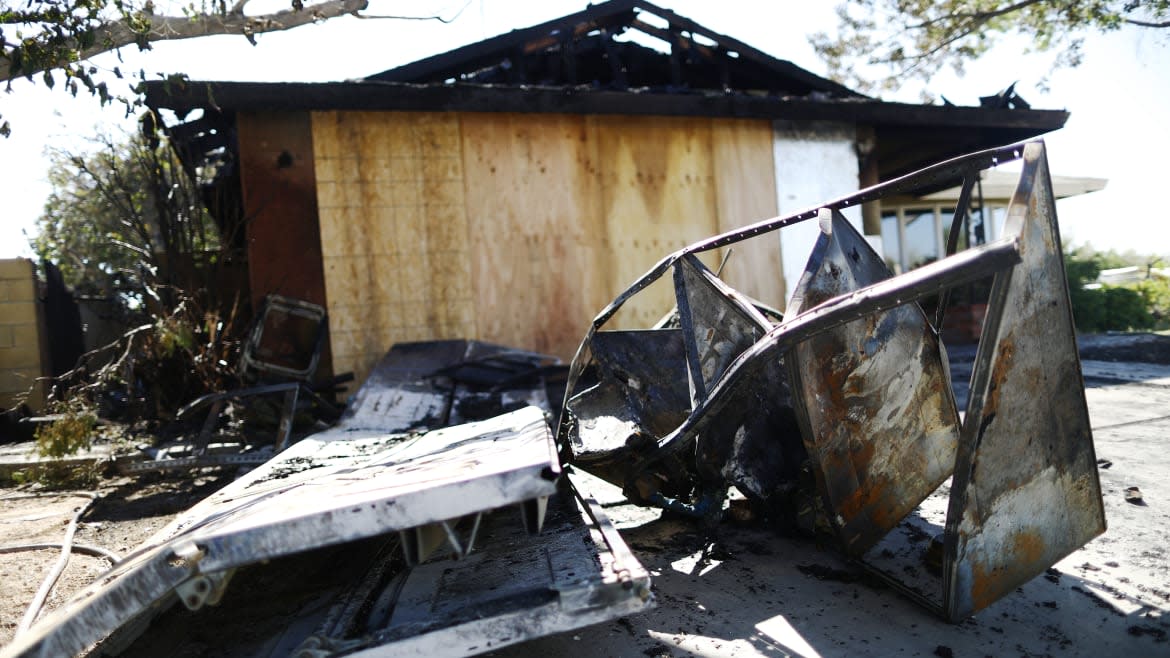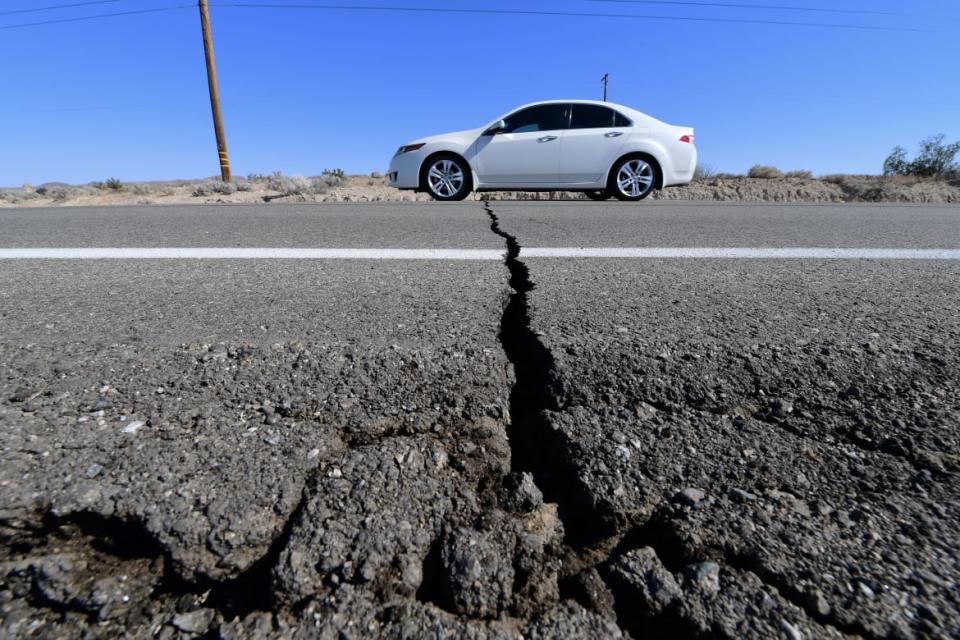Bigger Quake Feared After 6.4 Shaker Hits Southern California

Dozens of aftershocks hit Southern California in the hours after it was rocked by a 6.4 earthquake Thursday morning—but even more intense temblors could be coming.
The U.S. Geological Survey forecast a 9-percent chance of an equally large or bigger quake in the same area in the next week. And there’s a 59-percent chance of a magnitude 5 quake, which is big enough to cause damage.
“This does not make [the Big One] less likely,” Caltech seismologist Lucy Jones told the Los Angeles Times.
By Thursday evening, the USGS had already recorded 49 aftershocks of magnitude 3 or higher, which means they are strong enough to feel. The number of aftershocks typically reduces over time, but if there’s a particularly strong one, the number could jump up again.

One aftershock even interrupted a live CNN interview about the original quake.
“We're having another one right now,” one person, who experienced the first earthquake in its epicenter of Ridgecrest, California, told CNN's Brooke Baldwin around 11:30 a.m. Pacific Time. “I'm a little out of breath,” the woman said live on air, “... all I can care about right now is my babies, my children, but you're stuck at work and you got to pull it together and focus on everybody else.”
Ridgecrest is located about 100 miles north of Los Angeles in the southwest of the remote Searles Valley in San Bernardino County, California.
The city of about 27,000 people has since declared a state of emergency, according to mayor Peggy Breeden.
Ridgecrest resident Kimberly Washburn told CNN that she was directing a children's Fourth of July performance when the earthquake started. The quake shook the building, scaring the children assembled on stage and their parents in the audience. Luckily, Washburn said they were able to evacuate everyone before a wall fell behind where the children had been standing.
“It was terrifying,” Washburn said.
Shaking near the epicenter in Ridgecrest was clocked by USGS as over a MMI seven on the Modified Mercalli Intensity Scale, which measures the intensity of an earthquake on the Earth's surface. According to the scale, a seven indicates “very strong” intensity that can cause negligible damage in buildings of “good design and construction,” but considerable damage in “poorly built or badly designed structures.”
The quake caused some fires in Ridgecrest, threw photos off walls, and flung merchandise off of shelves in stores. There were some injuries as a result, but no deaths have been reported.
Ridgecrest business owner Virginia Henry, who experienced San Francisco's deadly 6.9 magnitude earthquake in 1989, was reading in her bedroom about 10 miles from the city when the shaking started on Thursday. Henry told the Los Angeles Times that this quake felt all too familiar.
“It was feeling a whole like the Loma Prieta earthquake up in San Francisco in ’89,” she said. “I immediately thought, ‘I probably shouldn’t be sitting there.’ ”
California's earthquake early warning system, ShakeAlert, issued an alert to residents near the mainshock seconds after the earthquake began, according to USGS. But their neighbors further south in Los Angeles received no alert, despite feeling the effects of the quake.
The ShakeAlertLA app was designed only to alert users physically located in Los Angeles County if there was at least a level 4, “light shaking” on the MMI scale. While seemingly significant, what Los Angles residents felt on Thursday was only a level two or three on the scale.
Scientists are reportedly at work trying to improve the public safety system—which notified those with the app in Ridgecrest 6.9 seconds after shaking had already begun. The massive undertaking, in partnership with USGS, depends on hundreds of seismic sensing stations placed along throughout California, Oregon, and Washington.
No matter the improvements, ShakeAlert will never be able to predict an earthquake. The system is merely intended to give people some time to protect themselves before the brunt of an earthquake hits.
“ShakeAlert is not earthquake prediction,” reads the app's website, “rather a ShakeAlert indicates that an earthquake has begun and shaking is imminent.”
Just this past week, California Governor Gavin Newsom approved a state budget that included nearly a billion dollars for emergency management, and $16.3 million to complete the buildout of ShakeAlert.
“Part of our historic one-billion-dollar investment in emergency preparedness is investing in earthquake technology,” Newsom told followers in a video address shared on Twitter. “16.3 million dollars in this year's budget to finally complete our early warning system... to prepare Californians for the next earthquake.”
Get our top stories in your inbox every day. Sign up now!
Daily Beast Membership: Beast Inside goes deeper on the stories that matter to you. Learn more.

